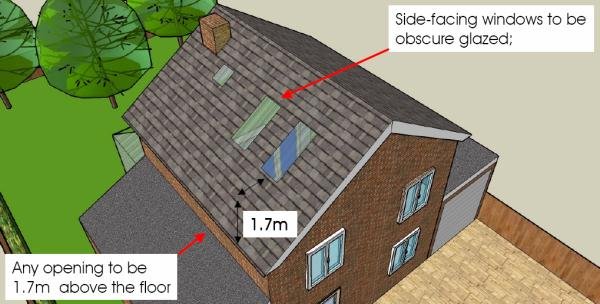Loft conversions are a great way to maximize the living space available in your property without using up any of the garden area. When unused attics are turned into functional rooms, it can certainly increase the value of your home.
There’s a distinct trend towards homeowners remaining where they are instead of moving, as they opt for extending downwards into basements or up into lofts. For basement and loft conversions London is certainly a hotspot at the moment, but lofts are also popular in Birmingham, Sheffield and Manchester, too.

How the Planning Laws Stand Today
The question that arises when many homeowners think about converting their usable loft space is about whether they need planning permission. The easy answer is ‘not normally’, but as with all things pertaining to planning permission, there are some provisos.
The planning laws regarding loft conversions changed significantly on October 1st 2008. Prior to this date, a Total Permitted Allowance would be granted on a property to allow for it to be extended. Any extension beyond this figure would require planning permission. This meant that in many cases where a ground-floor extension already existed, a lot of the Total Permitted Allowance would be used up, meaning that often loft conversions would indeed need planning permission. Additionally, the various local authorities would interpret the law in different ways. Fortunately, the new simplified planning laws have addressed this injustice and confusion.
Planning permission is now only required if the roof space is extended or altered beyond specified limits and conditions. However, it should be pointed out that roof extensions are not permitted in listed buildings, Areas of Outstanding Natural Beauty, conservation areas, national parks and World Heritage Sites. You also need to consider protected species such as bats when making your plans.
Meet These Conditions to Avoid the Need for Planning Permission
Loft conversions are permitted developments as long as they don’t exceed a volume allowance of forty cubic metres of extra roof space for terraces and fifty cubic metres for semi-detached and detached houses.
The loft or roof conversion should not project further than the angled surface of the existing roof slope that is set adjacent to the highway. It cannot overhang the outer face of the wall of the original house, and no part of it should extend to a greater height than the highest section, or ridge line, of the roof. It should be set back as far as is practicable from the original eaves by at least twenty centimetres. There should be no raised standing areas or any form of balcony. Any windows in the side of the house should have obscured glass and should open at least 1.7 metres from the floor. The materials used in the construction should be in keeping with those used those used on the exterior elevations of the house.
As long as your proposed development falls within the bounds of these criteria, you do not need planning permission. However, planning permission is required if you intend to build a dormer, mansard or hip to gable conversion, as these do fall outside the parameters. Planning applications can take around two months to process, and the fee is about £150 in England.